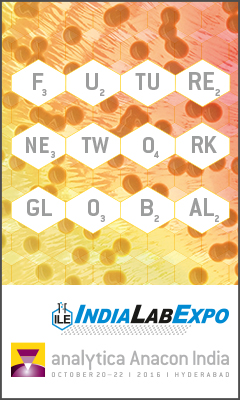|
L&Mint-int-3-2015
Cell experiments with optical tweezers are revolutionising biomedicineTweezing without touching - von Robert Meissner, Christina Alpmann, Álvaro Barroso, Prof. Dr. Cornelia Denz
Ultramodern imaging techniques such as the Nobel Prize-winning STED microscopy enable the investigation of organisms, cells, bacteria and even viruses, DNA or individual molecules at very high spatial and temporal resolution. Active intervention in these tiniest of biological structures has been largely limited to indirect methods, however. While new developments such as microtweezers and micromechanical clamps are promising, these devices generally...
 Developments in analytical techniques in the academic fieldNew century... old challenges - von Ass. Prof. Dr. José C. Rodrigues
In 1897, J.J. Thomson presented the world’s first particle accelerator, along with what would become, years later, the initial mass detector. Following developments in the 1940s, the equipment developed at the Cavendish Laboratory in Cambridge in 1912 was destined to, revolutionise analytical chemistry. For his discovery of ‘negatively charged corpuscles’, which we now call the electron, Thomson was awarded the Nobel Prize in Physics in...
 Environmental microplasticsA danger to human health? - von Prof. Dr. Gerd Liebezeit
Humans create their own environment and since the 1950s, this has increasingly included products made from synthetic polymers, commonly referred to as "plastics". Plastic waste in the environment is probably here to stay for decades – if not centuries. But can we actually remove plastics – and microplastics in particular – from the environment?
 Environmental risk factorsEnvironmental risk factors and developmental windows of disease and disease prevention - von Prof. Dr. Günter Vollmer
At every stage of their life – from conception to death – organisms are exposed to a multitude of environmental factors, some of which are associated with severe health risks. Current research is now attempting to clarify the significance of particularly sensitive periods of the development of organisms, known as “developmental windows of disease”. Within these windows, there is an increased chance of specific types of changes to occur which...
 Using functional polymers in porous structures for transport controlSwitchable nanochannels - von Ass. Prof. Dr. Annette Andrieu-Brunsen
Can molecular transport be controlled by nanoscale pores? In both human technology and Nature, many transport and separation processes are based on pores and porous materials. If transport needs to be time-controlled and separation based not merely on size, it becomes necessary to combine pores of a certain size with switchable chemical functions or polymers.
 What can analytics tell us?Nanoparticles in food - von Dr Philipp Brüning
Over the last few years, legislation specifically governing the handling of nanomaterials (NMs) has been steadily expanded within the EU (Fig. 1). One example is the Food Information Regulation, which requires that food ingredients in the form of “engineered nanomaterials” must be clearly indicated in the list of ingredients. To produce accurate labelling – and to inspect and assess this labelling – clear definitions are required, alongside...
 |
L&M int. 3 / 2015
|
















